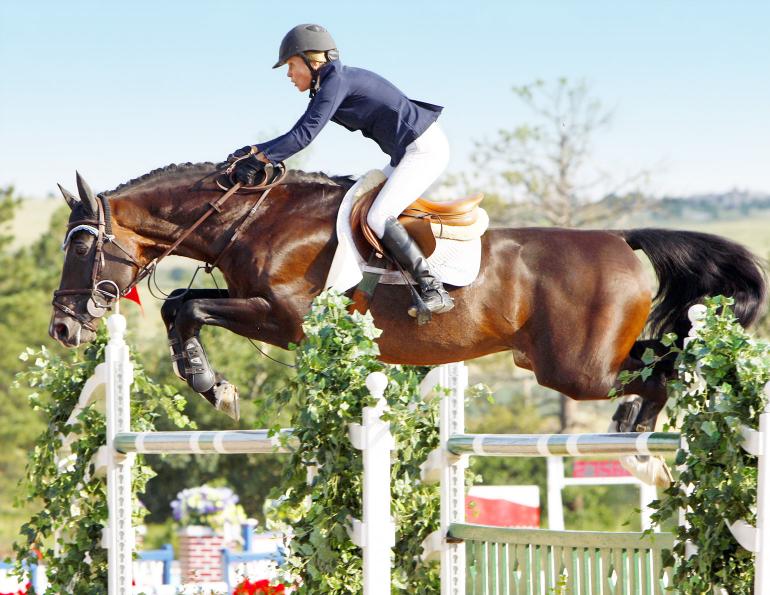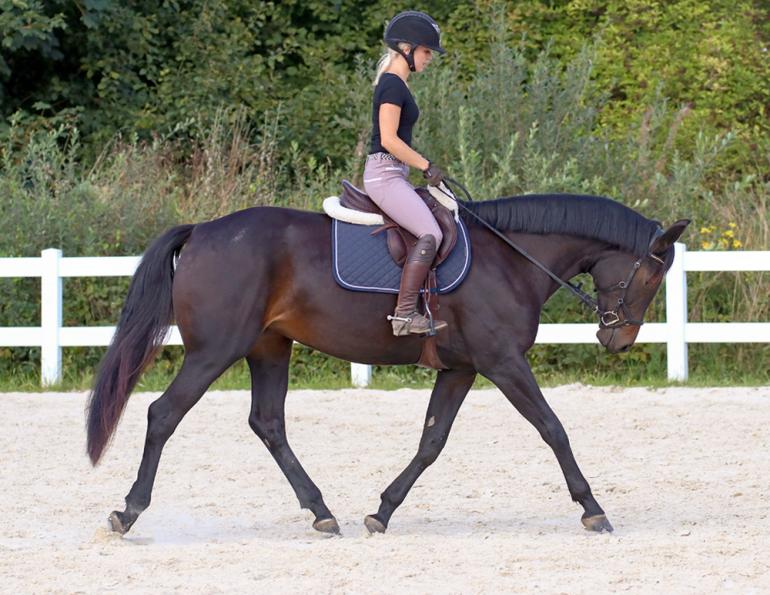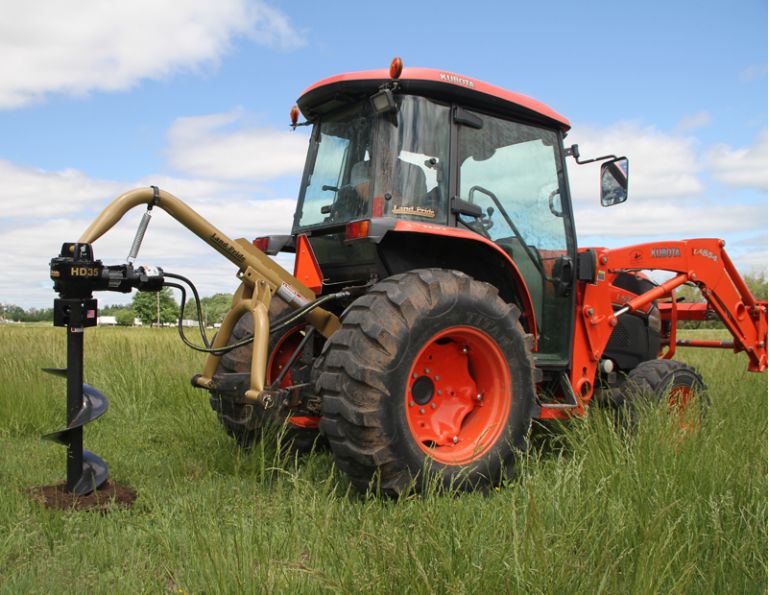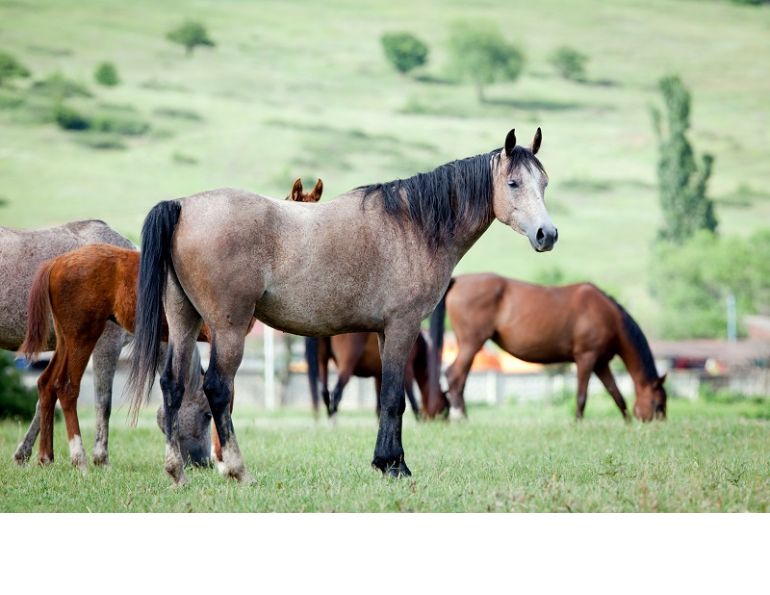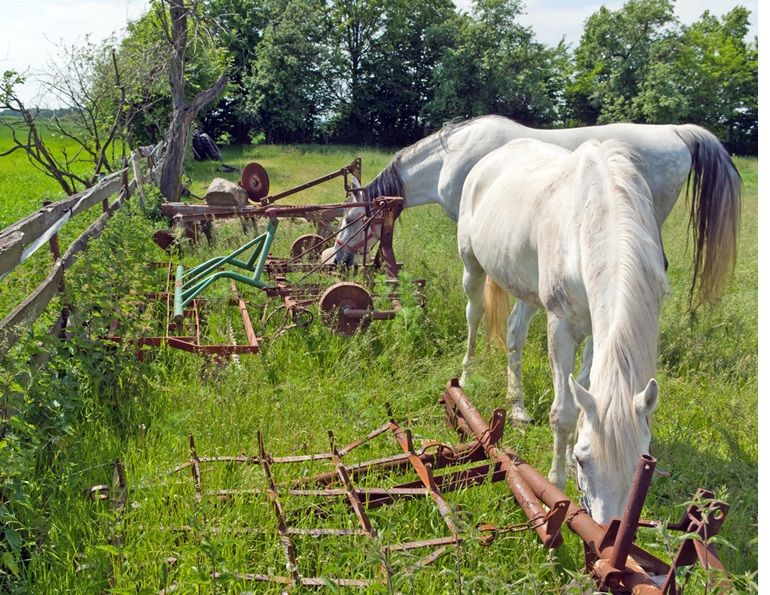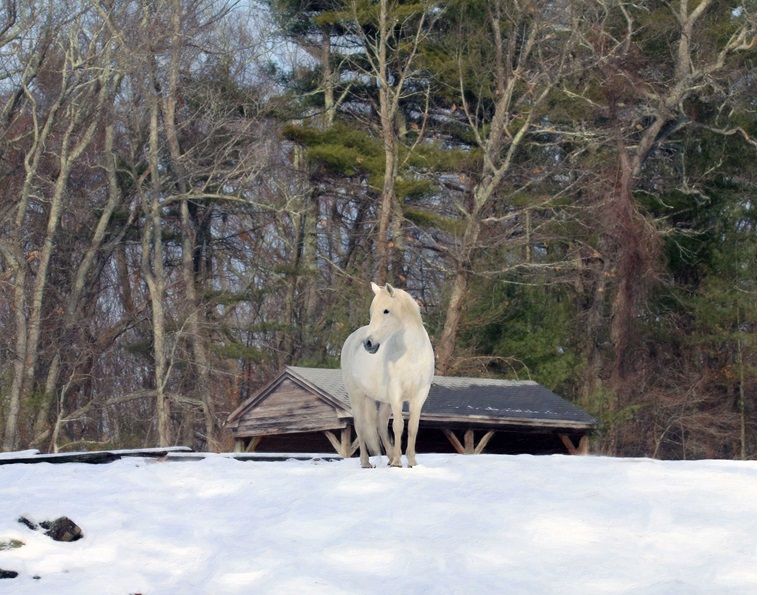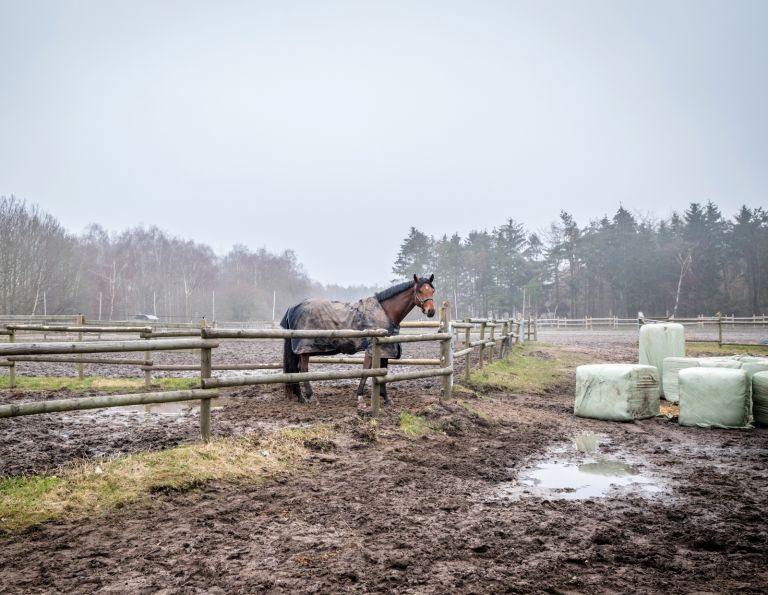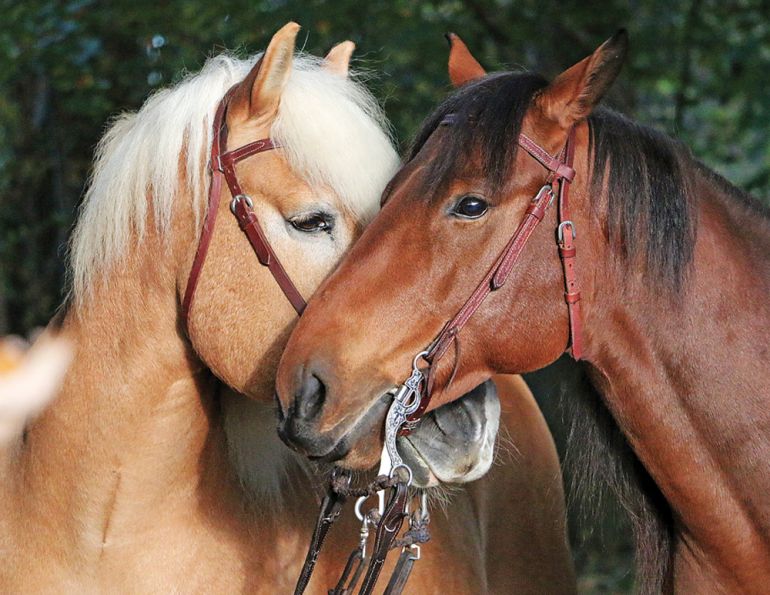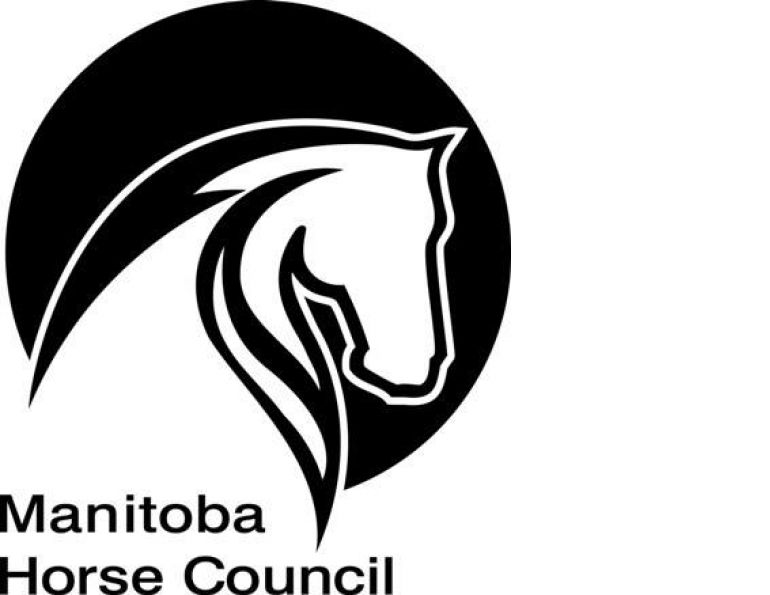Source: Equine Guelph
Do you struggle with managing mud on your horse farm?
Some farms are more susceptible to muddy conditions than others. Mud is a result of prolonged wet soil conditions, which is often dependent on soil type and topography. After a rainstorm or spring snowmelt, clay soils drain more slowly than sandy soils and are therefore more prone to muddy conditions. In addition, muddy conditions are more likely to occur in areas of low elevation because runoff water tends to accumulate in these areas.
Mud is not only unsightly, it can create an unsafe environment for your horse. Horses that do not have solid footing are more likely to injure themselves due to a slip or fall. Muddy conditions also harbour bacteria and fungus that may cause your horse to develop health problems. The good news is, there are steps you can take as a horse owner to reduce the amount of mud on your farm.

Good pasture management means restricting horses to a sacrifice paddock when the larger field or paddock is too wet or overgrazed. Photo: Canstock/Lbrix
How to Reduce Mud on Your Farm
Restriction
It is always easier to avoid creating a muddy condition than it is to fix it. The first and most important step to managing mud on your property is to restrict horse access from the wettest parts of the farm. This might mean reconfiguring paddock shapes to avoid a wet area, abandonment of a paddock altogether, or installing fencing to keep horses out of the ponds, wetlands, or streams which run through a pasture. Horses tend to gather around wet areas.
The trampling of streamside vegetation causes bare soil and eventually mud. This results in increased amount of nutrients and sediment being lost to the aquatic ecosystem, which is harmful and may cause fish kills.
Pasture Management – Create a Sacrifice Area
The best way to ensure that your pastures remain mud free is to give them the rest they require. Pastures require rest when their plants are dormant (i.e., in the winter) and during the growing season when they have been heavily grazed. During the winter, horses should be restricted to a sacrifice area. Sacrifice areas can be a small paddock, corral, or pen that serves as the horse’s outdoor living space during the winter months. Often, horse owners turn their horses out to pasture too quickly in the spring. This damages the pasture plants and delays their growth. Keep your horses in the sacrifice area until the pasture plants have six inches of new growth. This will ensure top quality pasture for the remaining spring and summer months.
Related: Spring Horse Health Checkup
Related: Muddy Horse Paddock Footing Fixes
During the summer months when horses have access to the pastures, care should be taken to not graze the pastures too short. Grazing should be limited to approximately two inches so that the pasture plants are able to quickly rejuvenate. If you are fortunate to have the space for multiple pastures it is best to rotate the horses between the pastures, moving them every five or six days. Each pasture should be of sufficient size to provide each horse with one to two acres. During times of extremely hot and dry weather the pastures may not grow very quickly. Even when practicing rotational grazing, you may find that the pasture plants are slow to rejuvenate. At times like this, it is recommended that horses be confined to the sacrifice area until the pasture plants begin to grow and reach five to six inches. In early autumn when nighttime temperatures begin to drop, plant growth slows dramatically.
Turn your horses out only when the pasture plants have grown to five or six inches; otherwise leave your horses in the sacrifice area. Taking care to not overgraze pasture plants in the autumn allows them to go dormant in a healthy state and quickly come out of dormancy in the spring.
Manure Management
No matter how wet or dry your small paddocks or sacrifice areas are, it is always best to remove the deposited manure from them to prevent mud. Ideally, it is recommended that manure be removed at least once per week. Manure removal may be required at a more frequent intervals in high traffic areas such as around water stations and gates. Removal of manure from paddocks or sacrifice areas not only increases the visual appeal of your farm by preventing mud, but it also creates a healthier environment for your horses.
Directing and Controlling Incoming Water
Soil and manure require water in order to be transformed into mud. By controlling the amount of water entering your paddocks/sacrifice area, you can control the amount of mud that is generated. The first step is to divert any roof runoff water away from the paddocks/sacrifice area. The installation of eavestroughs and downspouts on your barns and run-in shelters will reduce the amount of water entering onto your paddocks/sacrifice area. If possible, downspouts should be directed towards a low-lying area outside the paddock/sacrifice area.
Related: Grazing Muzzles
Related: What’s Biting Your Horse?
Roof runoff water is clean and it should be discharged into a location where it will not become contaminated with manure or mud. Roof runoff water can also be captured by a rain barrel.
This water can be used for cleaning purposes in and around your barn, helping to conserve water.
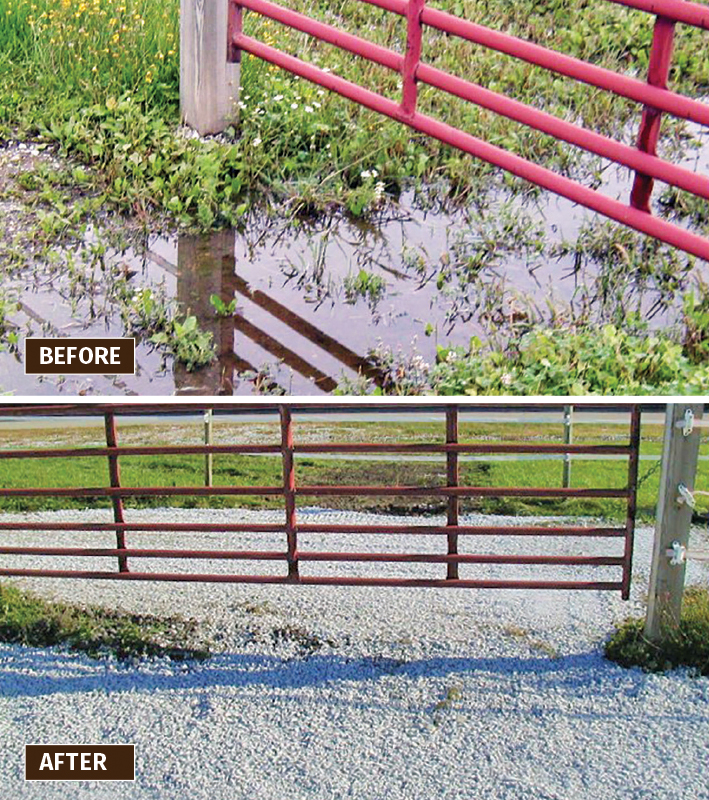
Low patches of ground in high traffic areas collect rainwater and become boggy and muddy as hooves churn and compact the soil. Prevent mud from forming and provide firmer footing in wet seasons by filling these low patches with gravel. Photos: eXtensionHorses/Flickr
If your paddock/sacrifice area is located in a low-lying area, chances are you have seen surface runoff water flowing onto it. If it is not possible to move your paddock/sacrifice area to a higher and drier location, you may want to consider diverting the overland flowing water.
Surface runoff can be diverted by creating a berm to direct water away from the paddock/sacrifice area. Alternatively, a French drain can be constructed to reduce the amount of runoff. French drains are trenches that are dug into the soil and backfilled with gravel. Surface runoff water flowing onto the gravel percolates down into the trench where it then flows towards an outlet. Therefore, French drains intercept the overland flowing water, preventing it from flowing onto the paddock/sacrifice area.
Footings
Even with proper paddock/pasture area mud management you may still find that certain high-traffic areas within the paddock experience muddy conditions at certain times of the year.
Special attention should be given to these areas. Mud control in high traffic areas such as food and water stations and gateways can be improved by installing improved footings.
Common footing materials used include sand, gravel, or wood chips. Each has their own advantages and disadvantages. Sand is very comfortable for the horse, but horses should not be fed on it as if ingested can contribute to sand colic. Gravel drains extremely well and provides a firm footing, but gravel that is larger than 5/8-inch can be uncomfortable for horses to stand on. Wood chips provide a very stable platform for your horse to stand and walk on, but because wood chips are an organic material they will decompose and require periodic replacement. Footing materials are most effective when they are placed on top of landscape filter fabric. The filter fabric prevents the footing material from sinking down into the soil and reducing the firmness of the footing. Footing materials should be placed at least six inches deep so that footing stability is maximized. There are also a number of commercially available soil stabilizing grid systems that can be used in these high traffic areas.
Related: How to Prevent and Treat Mud Fever
Related: Wet Weather Horse Care
Published with the kind permission of Equine Guelph.
Main article photo: Shutterstock/C Hamilton




